Abstract
The claim that lorisines possess wrist joint specialisations that parallel those in hominoids is refuted. The cautious, quadrupedal climbing lorisines therefore do not provide an adequate model for the locomotion of emergent hominoids, as has been suggested. The notion that the Hominoidea possess unique wrist joint synapomorphies facilitating an increased range of forearm supination, and correlated thereby with a capacity for suspensory forelimb locomotion, seems to be sustained. The lorisines do possess their own derived characters at the wrist, largely centred on the midcarpal joint, which accommodate an exaggerated habitual movement comprising ulnar deviation with extension and rotation of the sense of pronation; this produces the powerful pincer-like split hand. Rather similar but more extreme specialisations are described in schizodactylous marsupials. In all these specialised hands the habitual movement at the midcarpal joint appears to be merely an exaggeration of that occurring in the clasping type of hand found in the primitive therian mammals. This movement, about an axis running from dorsally on the radial side of the carpus with an angulation proximally towards the volar aspect on the ulnar side, apparently provided for adjustments in angulation between forearm and manus in the semi-sprawling gait of primitive non-cursorial therian mammals.
Full text
PDF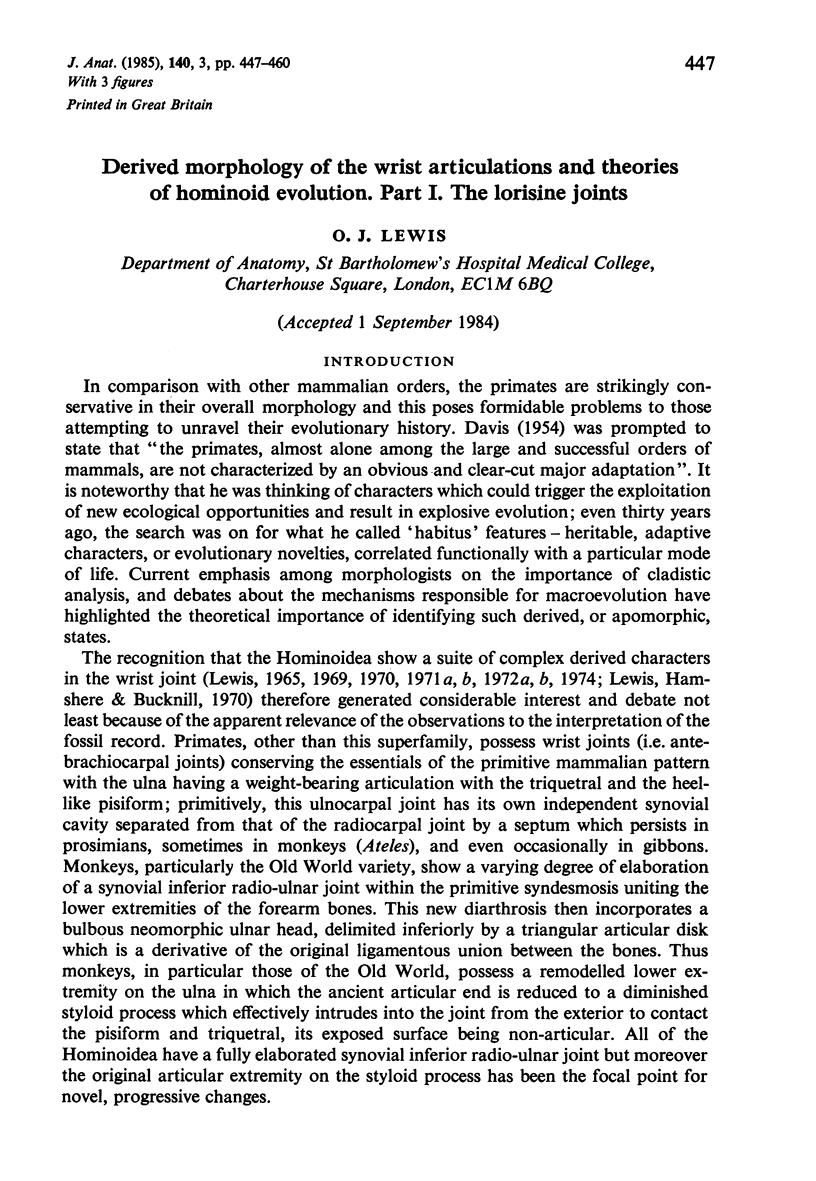
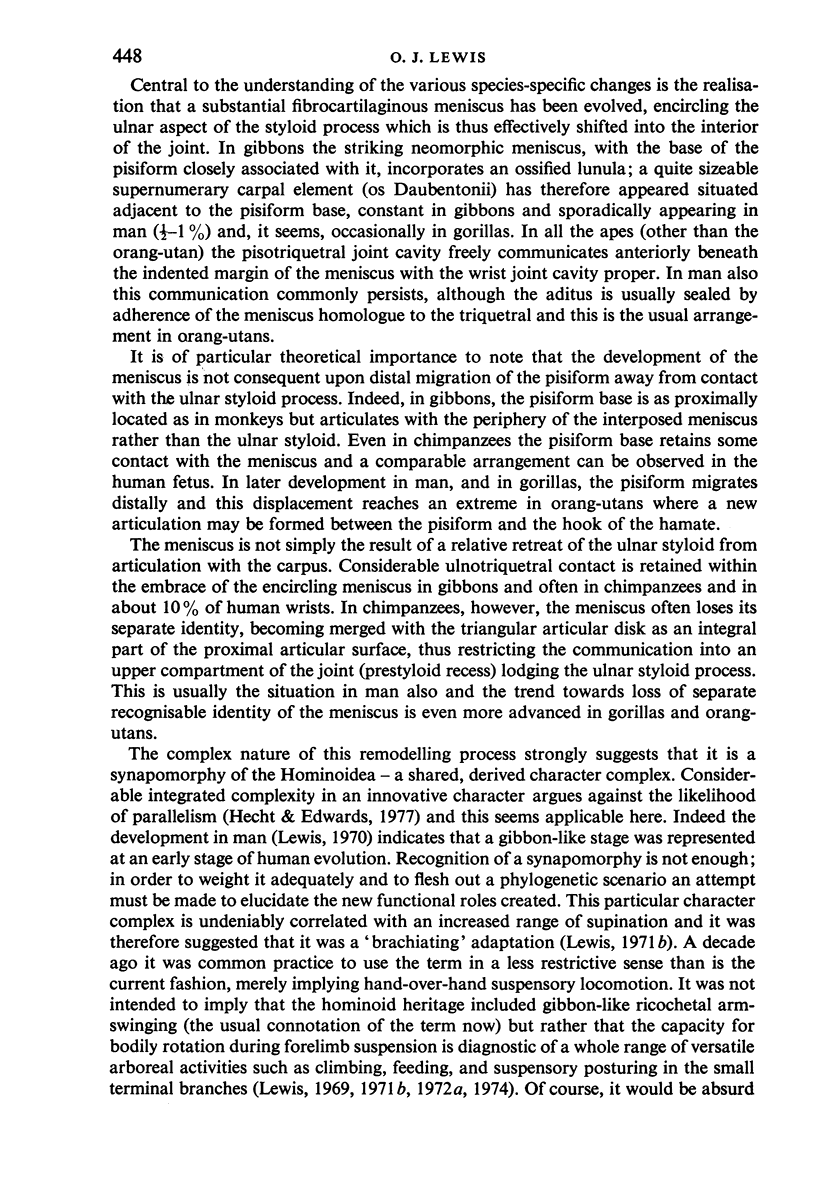
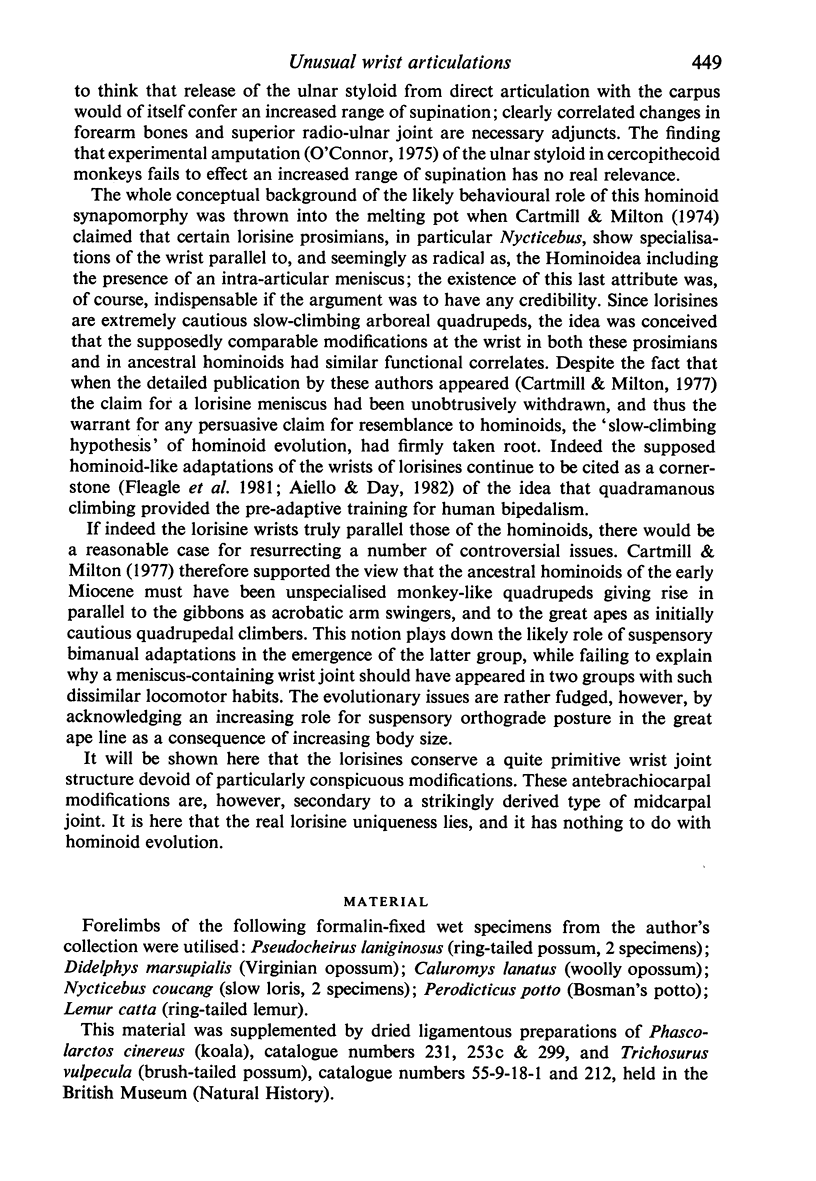
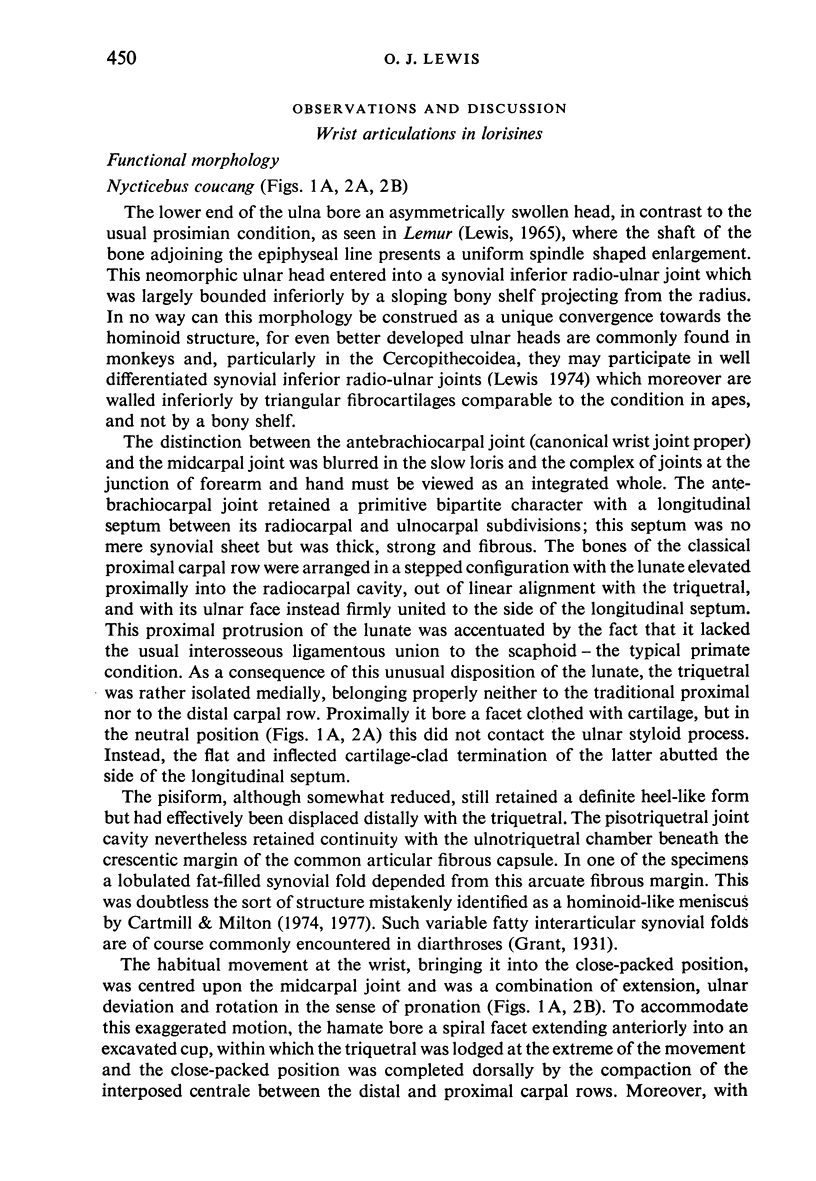

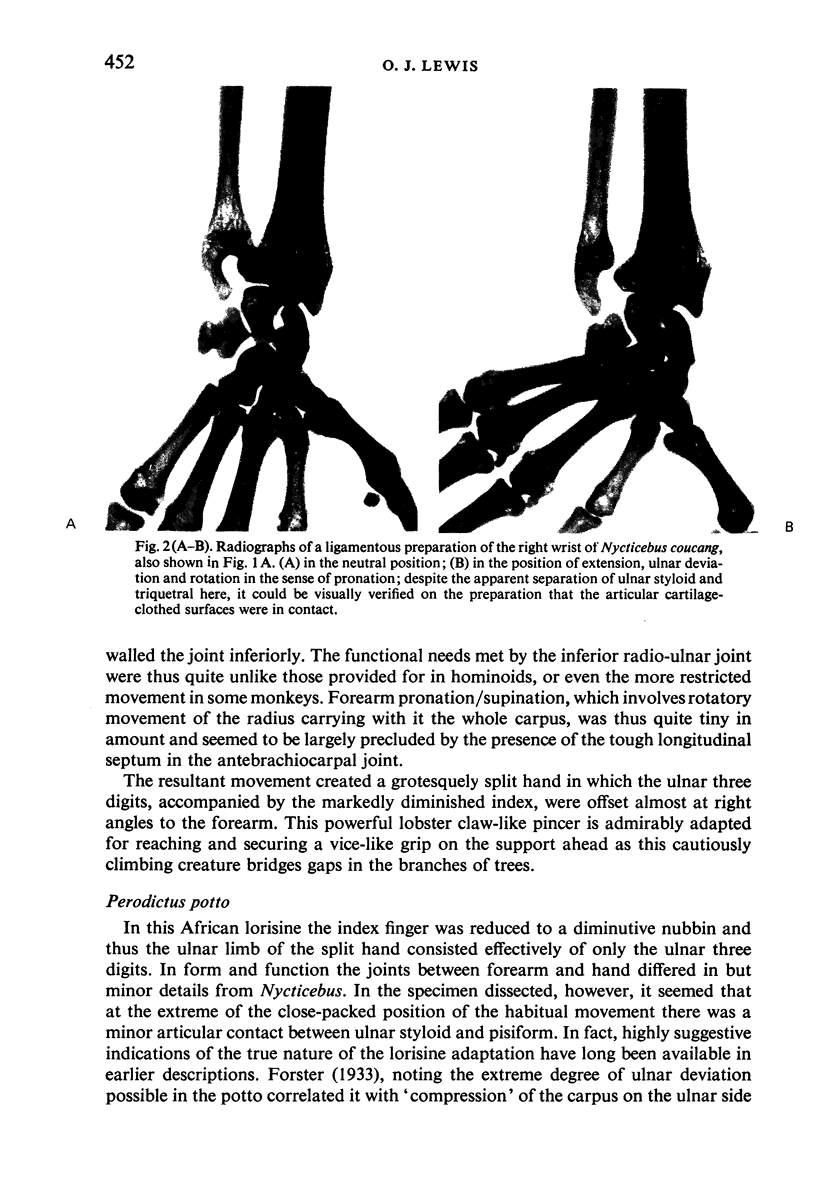
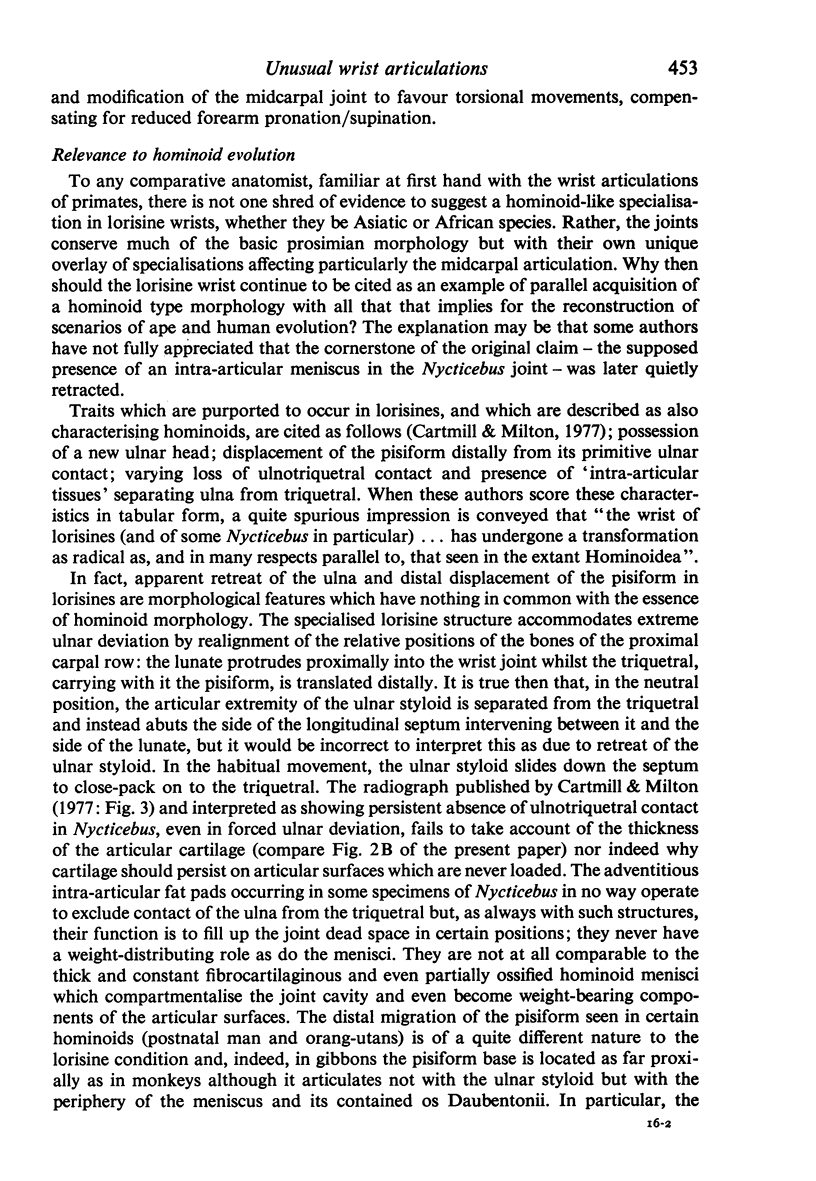
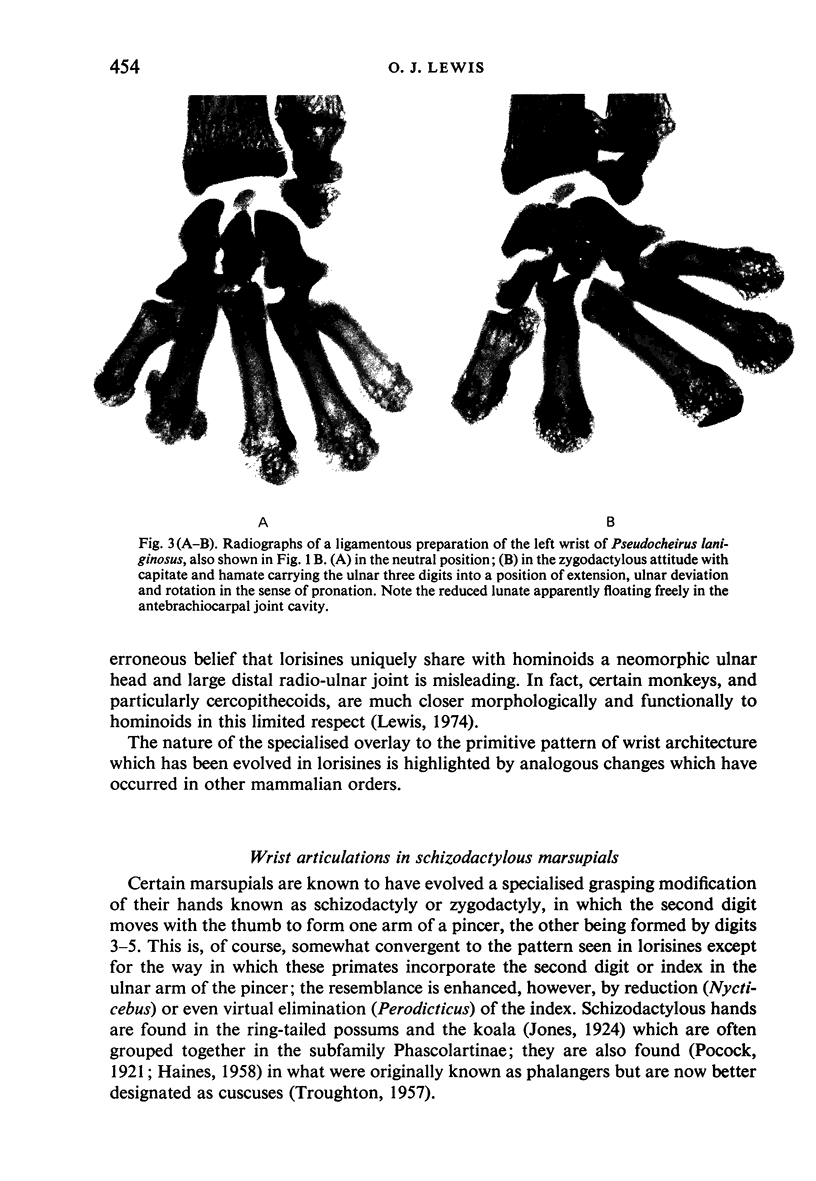
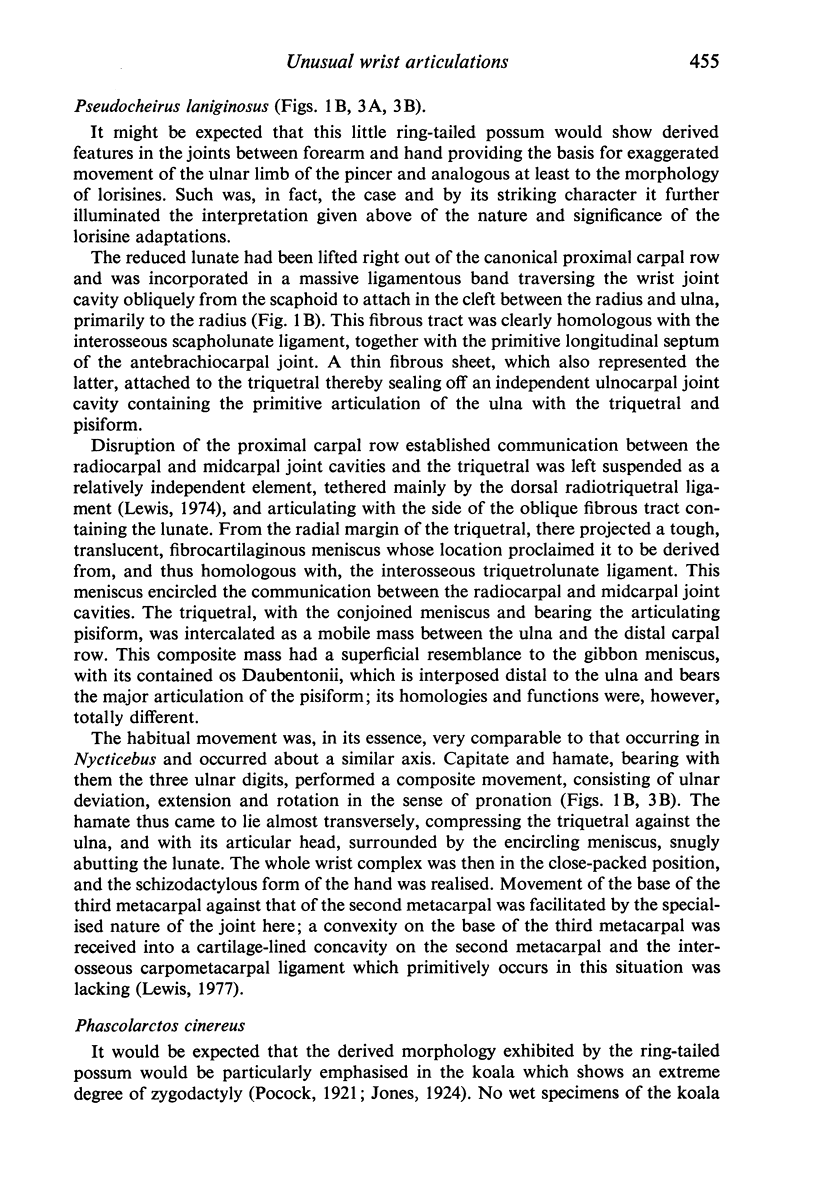
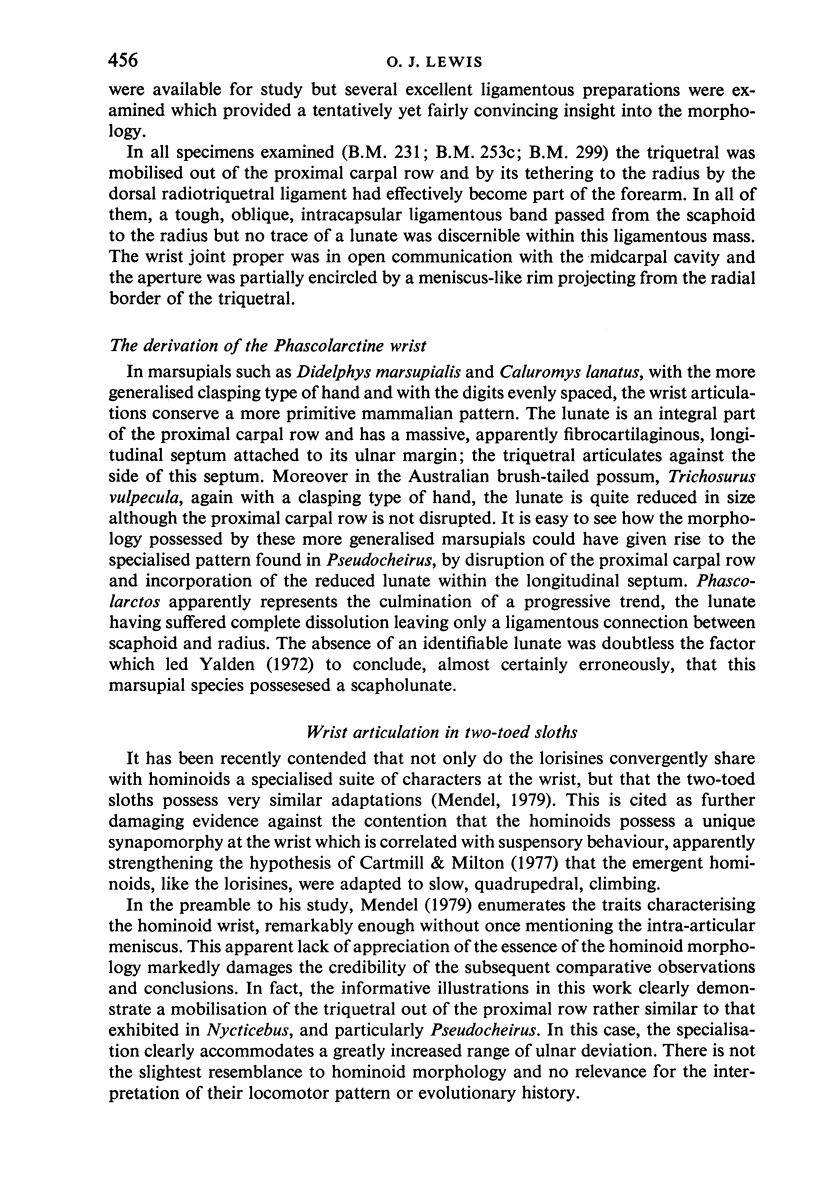
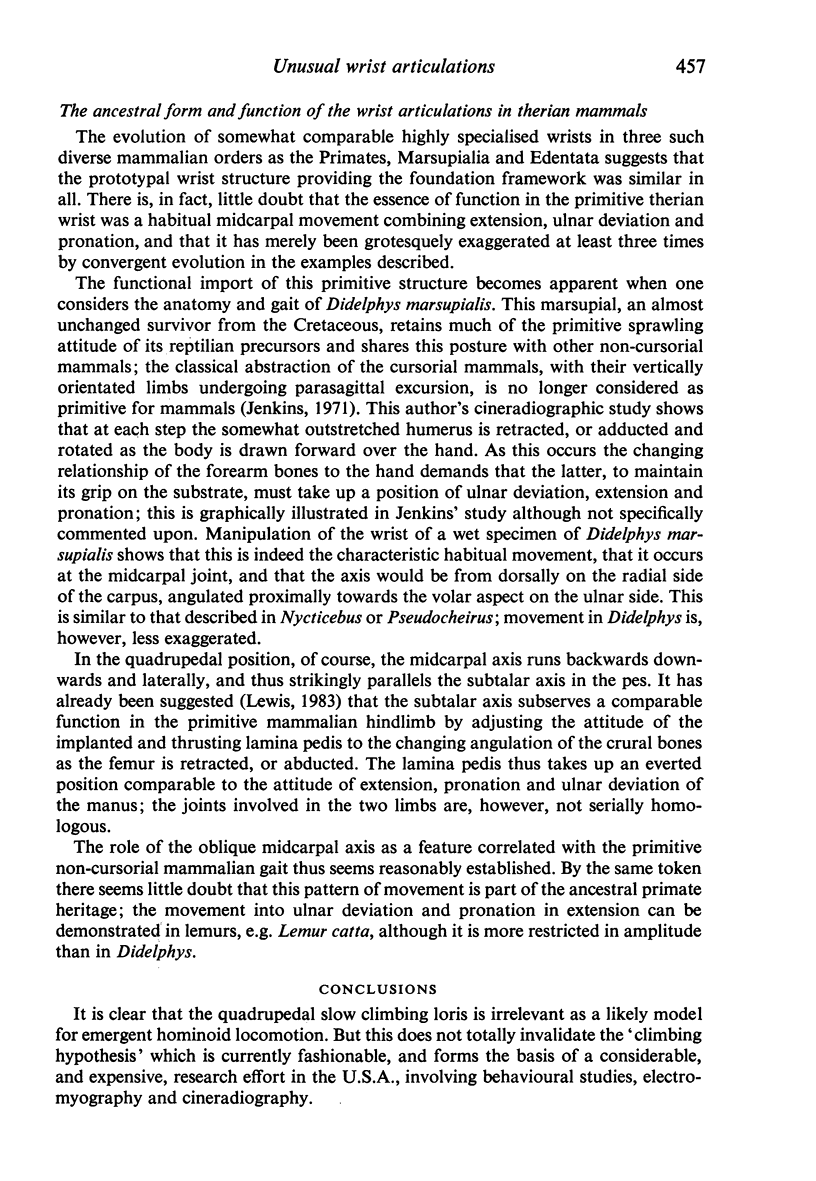
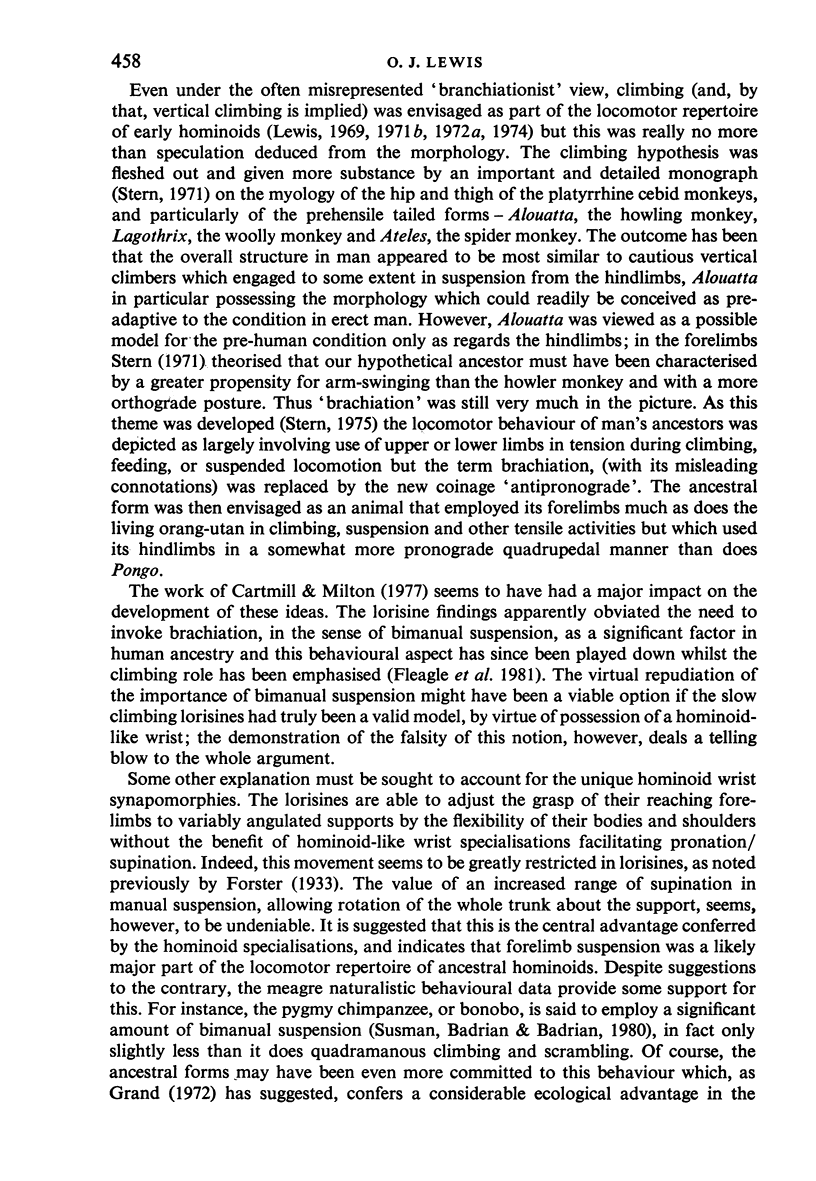
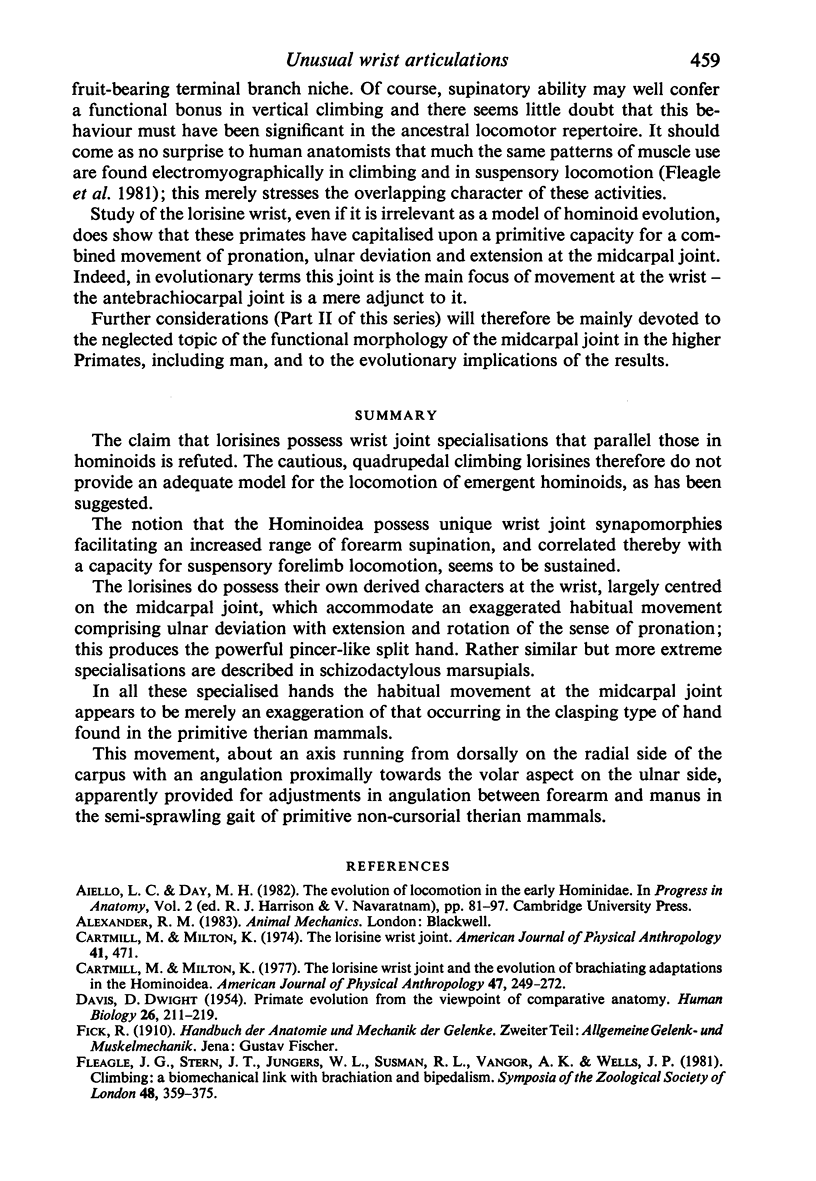
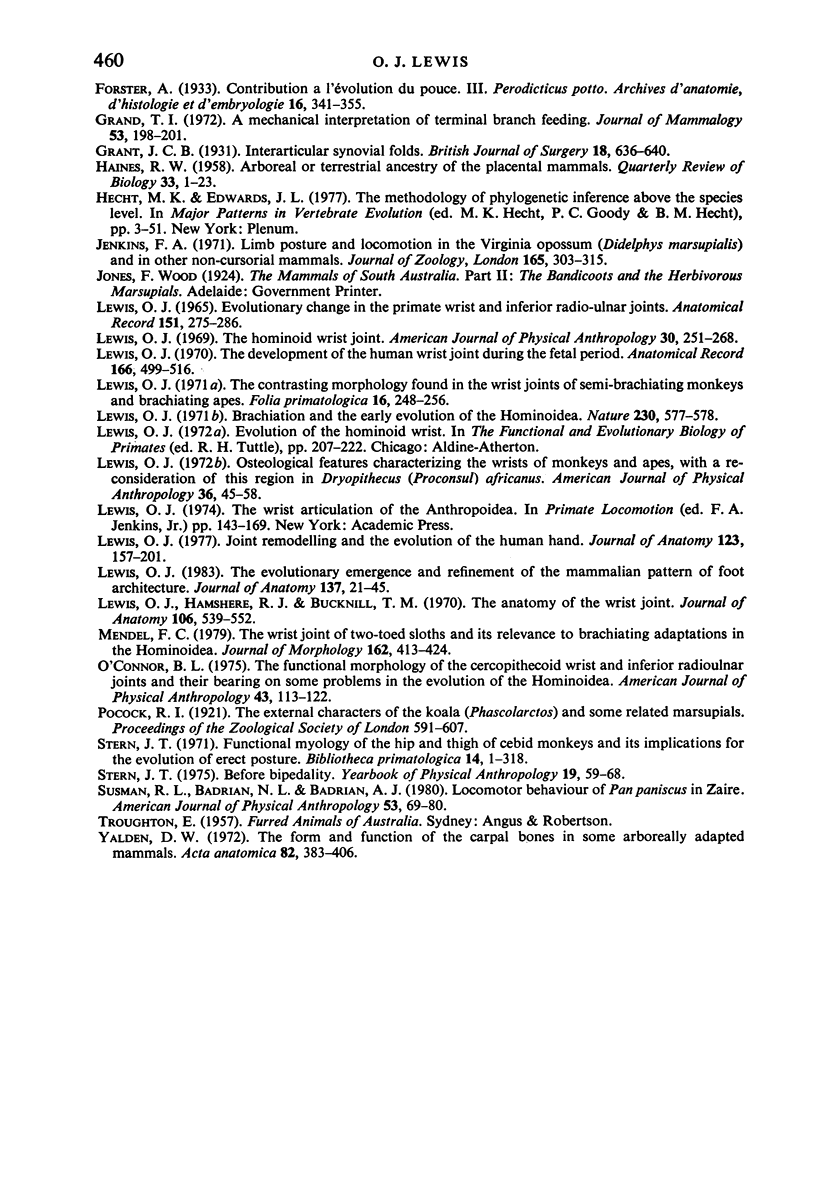
Images in this article
Selected References
These references are in PubMed. This may not be the complete list of references from this article.
- Cartmill M., Milton K. The lorisiform wrist joint and the evolution of "brachiating" adaptations in the hominoidea. Am J Phys Anthropol. 1977 Sep;47(2):249–272. doi: 10.1002/ajpa.1330470206. [DOI] [PubMed] [Google Scholar]
- DAVIS D. D. Primate evolution from the viewpoint of comparative anatomy. Hum Biol. 1954 Sep;26(3):211–219. [PubMed] [Google Scholar]
- HAINES R. W. Arboreal or terrestrial ancestry of placental mammals. Q Rev Biol. 1958 Mar;33(1):1–23. doi: 10.1086/402206. [DOI] [PubMed] [Google Scholar]
- LEWIS O. J. EVOLUTIONARY CHANGE IN THE PRIMATE WRIST AND INFERIOR RADIO-ULNAR JOINTS. Anat Rec. 1965 Mar;151:275–285. doi: 10.1002/ar.1091510309. [DOI] [PubMed] [Google Scholar]
- Lewis O. J. Brachiation and the early evolution of the hominoidea. Nature. 1971 Apr 30;230(5296):577–579. doi: 10.1038/230577a0. [DOI] [PubMed] [Google Scholar]
- Lewis O. J., Hamshere R. J., Bucknill T. M. The anatomy of the wrist joint. J Anat. 1970 May;106(Pt 3):539–552. [PMC free article] [PubMed] [Google Scholar]
- Lewis O. J. Joint remodelling and the evolution of the human hand. J Anat. 1977 Feb;123(Pt 1):157–201. [PMC free article] [PubMed] [Google Scholar]
- Lewis O. J. Osteological features characterizing the wrists of monkeys and apes, with a reconsideration of this region in Dryopithecus (Proconsul) africanus. Am J Phys Anthropol. 1972 Jan;36(1):45–58. doi: 10.1002/ajpa.1330360107. [DOI] [PubMed] [Google Scholar]
- Lewis O. J. The contrasting morphology found in the wrist joints of semibrachiating monkeys and brachiating apes. Folia Primatol (Basel) 1971;16(3):248–256. doi: 10.1159/000155406. [DOI] [PubMed] [Google Scholar]
- Lewis O. J. The development of the human wrist joint during the fetal period. Anat Rec. 1970 Mar;166(3):499–515. doi: 10.1002/ar.1091660308. [DOI] [PubMed] [Google Scholar]
- Lewis O. J. The evolutionary emergence and refinement of the mammalian pattern of foot architecture. J Anat. 1983 Aug;137(Pt 1):21–45. [PMC free article] [PubMed] [Google Scholar]
- Lewis O. J. The hominoid wrist joint. Am J Phys Anthropol. 1969 Mar;30(2):251–267. doi: 10.1002/ajpa.1330300211. [DOI] [PubMed] [Google Scholar]
- O'Connor B. L. The functional morphology of the cercopithecoid wrist and inferior radioulnar joints, and their bearing on some problems in the evolution of the Hominoidea. Am J Phys Anthropol. 1975 Jul;43(1):113–121. doi: 10.1002/ajpa.1330430115. [DOI] [PubMed] [Google Scholar]
- Yalden D. W. The form and function of the carpal bones in some arboreally adapted mammals. Acta Anat (Basel) 1972;82(3):383–406. doi: 10.1159/000143822. [DOI] [PubMed] [Google Scholar]




